14,000 years later, a cave artist at work
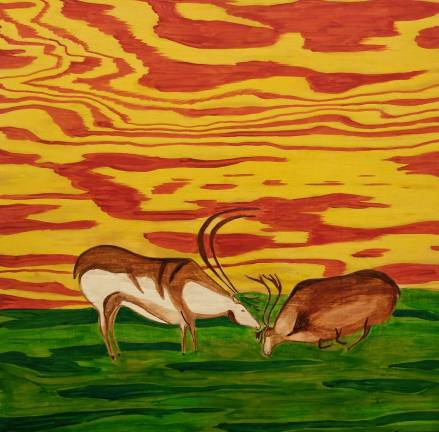
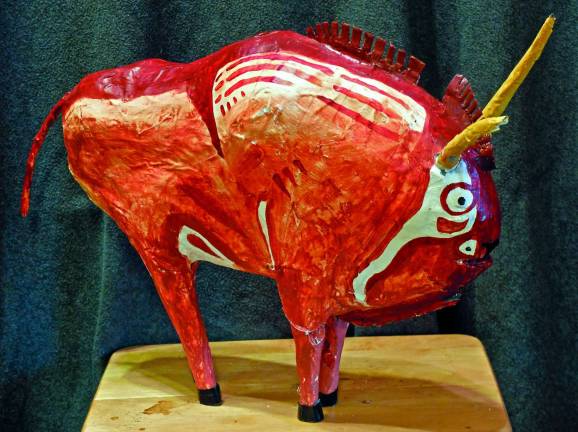
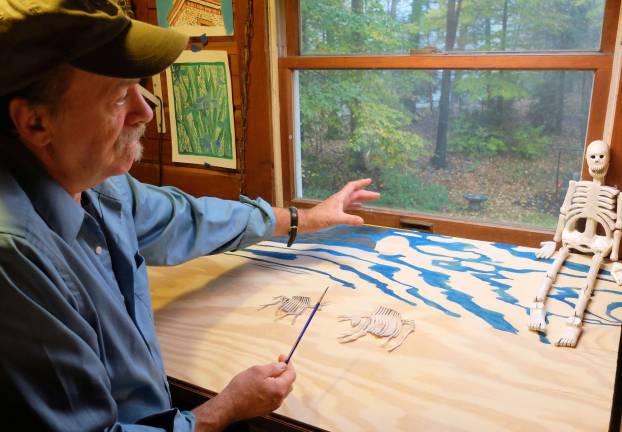
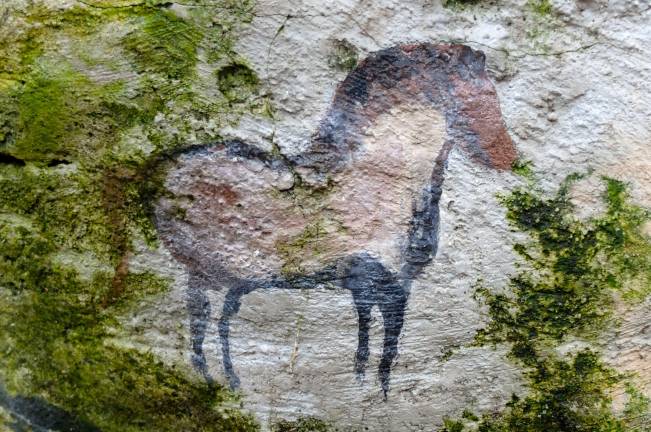
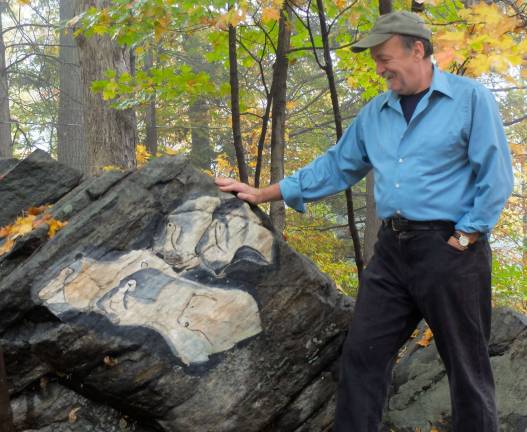
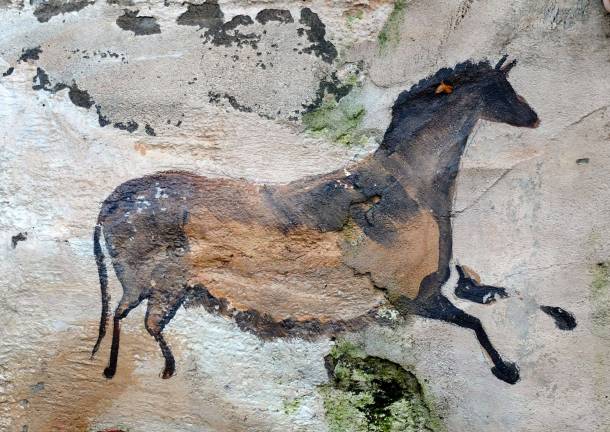
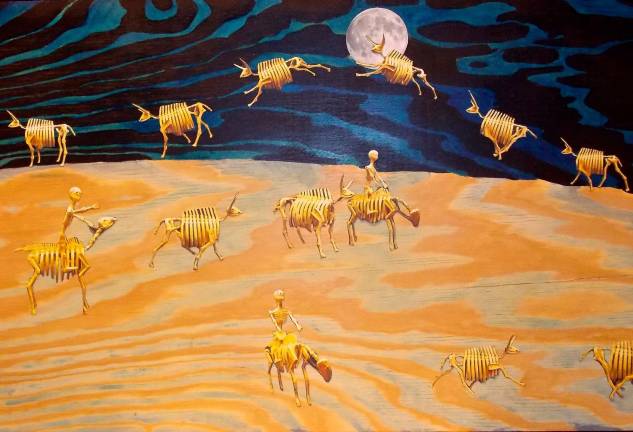
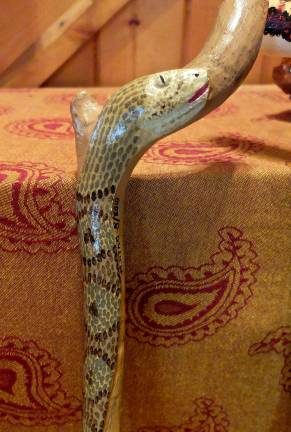
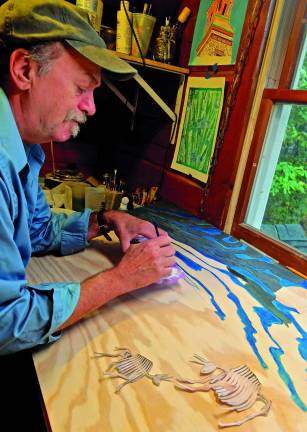
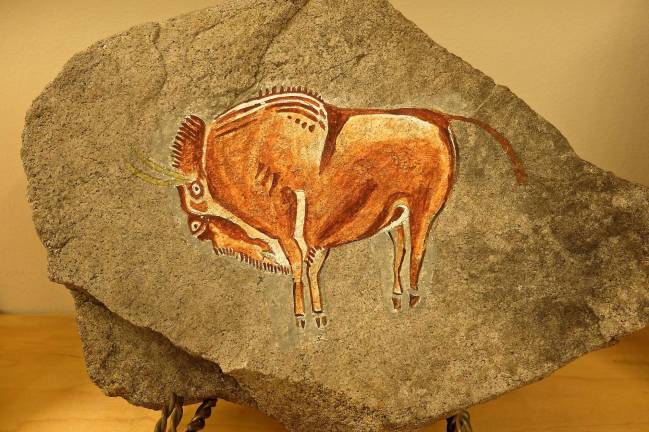
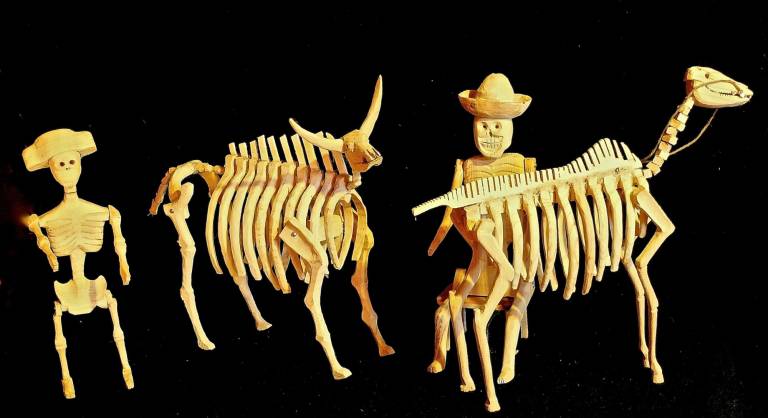
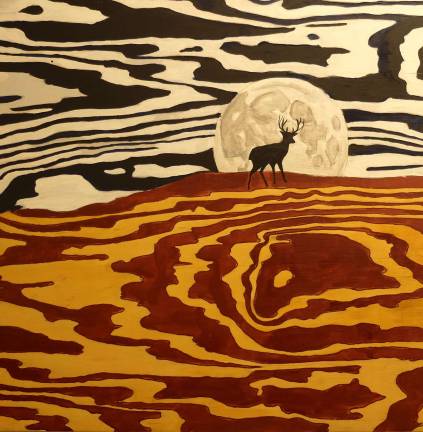
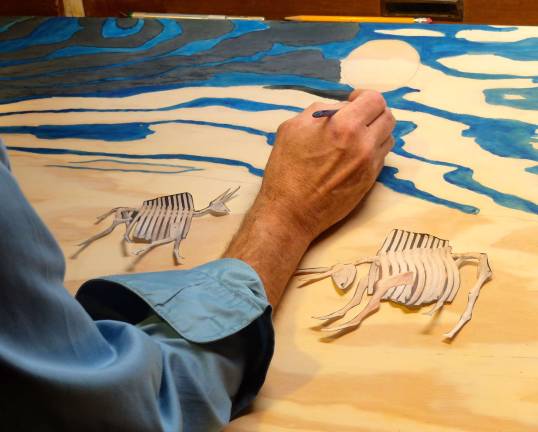
“I get so excited I could faint,” says Michael Byro, about rummaging through the scrap wood at Roe Brothers lumberyard, looking for inspiration for his latest painting.
Byro has an unconventional eye for art materials. In the undulating grains of a piece of plywood he sees cloud patterns and open grasslands. In the rocks in his garden he sees the faces of prehistoric beasts. In a block of yellow pine he sees a mastodon, just waiting to be unearthed.
Originally trained as a draftsman, Byro now expresses his creativity in many ways—building model boats and gingerbread houses, painting walking sticks, and carving wooden puppets. But only recently has he begun to explore a fascination that evolved during childhood: early cave paintings. As a teenager he was captivated by a red bull painted on the wall of the Cave of Altamira in Spain more than 14,000 years ago, an image that “made my skin crawl,” he says.
When Byro and his wife, award winning poet Laurie Byro, built their log cabin above Upper Greenwood Lake, he found a canvas in the glacial erratics—boulders left behind by the last ice age—on their property. Like the original cave painters, he used natural pigments such as charcoal and limestone to reproduce images from the famous cave paintings of Lascaux and Chauvet in France. However, unprotected from the weather, they didn’t last.
It was Laurie who suggested that he might try using wood for his cave art, and it has become his primary medium. He prepares the plywood surface with gesso, and then reveals the secrets of the grain using rich-hued watercolors. These provide the backdrop for his re-imagined primeval deer and auroch.
Byro’s only regret is that he didn’t consider himself an artist sooner. As though making up for lost time, he’s bursting with new ideas. He envisions a three-dimensional diorama of a cave painting, modeling the animals out of newspaper and duct tape. Recently, he’s experimented with carving articulated wooden animals that he poses, photographs from multiple angles, and then incorporates into his paintings. And next spring he’ll recreate his own “cave” in his yard by building a gazebo to cover the erratics. He intends to cover every rock surface with his prehistoric beasts. Melissa Shaw-Smith